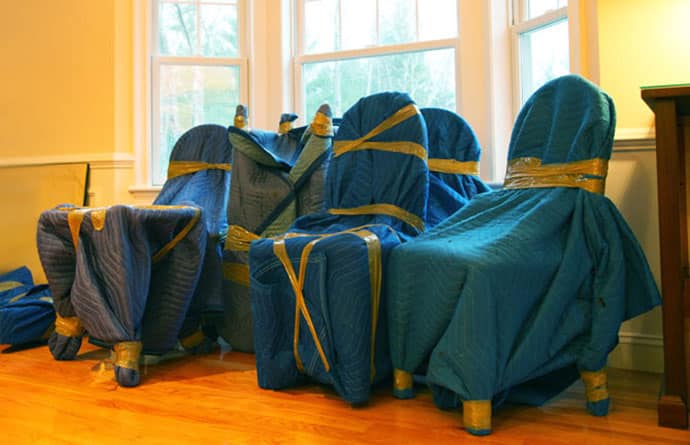
When was the last time you heard somebody say, “It’s better to be safe than sorry”?
If you haven’t heard this for a while, keep your ears open the next time you’re about to move house.
To protect your furniture when moving, you’ll need to go through several preparation stages to make sure your pieces will be as safe on the road as they can be.
Due to their bulkiness and weight, your furniture pieces will need special handling and even more special protection – after all, they can’t be just packed up in cardboard boxes and loaded onto the waiting moving vehicle like the rest of your possessions.
Luckily, if you follow the furniture protection stages described below, there’s a high chance that you won’t have to face and later deal with any issues during your residential move.
Trust us – additional problems such as broken or ruined pieces of furniture or even damage to your home are the last thing you would want on your moving day.
The first 3 stages will explain how to prepare furniture for moving, while the final 4th stage will be all about how to pack furniture when moving house.
You may also like to read: How to Protect Walls, Ceilings, Floors, Stairs, and Doors When Moving Home. Just as important as protecting your furniture during the move is to protect your old and new home. A dented wall or scratched wooden floor would be costly and inconvenient to have to repair. This guide tells you all you need to know about protecting your home during a move.
#1 Get Furniture Protection Materials

What is the best way to protect furniture when moving? Using the proper packing material for moving furniture, of course.
All in all, here’s what you will need to best protect your furniture when moving house:
Moving blankets
When it comes to keeping wood or leather furniture safe during a move, specialised moving blankets provide the best protection imaginable for your fragile pieces.
The truth is that their soft thickness and large cover area serve two distinct yet equally important purposes – excellent protection of the pieces wrapped up in them and superior safeguard of the most damage-susceptible spots in your home. And that double protection alone is something that other packing supplies can rarely offer.
Alternatively, if you don’t think purchasing or renting suitable moving blankets is worth the investment, you can instead use the ordinary blankets or coverings that you happen to have in your home.
Be mindful, though, that the unpredictability of a house move could ruin your home blankets forever, so use ones that you won’t be too sorry to lose.
Bubble wrap
The air-filled bubbly material is an outstanding choice when you need to protect the highly fragile and breakable elements of your disassembled furniture – glass doors, glass panels, intricately carved wooden parts, and so on.
Packing tape
Tape is probably the packing supply you will use most frequently when wrapping furniture for a move.
Purchase the best quality packing tape you can find and to make packing really easy, a tape gun is worth its weight in gold.
Shrink wrap
The generous usage of shrink wrap is one of the best ways to protect furniture during a move.
This type of plastic wrap is inexpensive yet very useful to keep drawers, doors, and other moveable elements shut and fixed in place during the move.
Also, shrink-wrapped furniture pieces won’t get exposed to dust, dirt, or other debris on the road to your new home.
You may also like to read: Plastic Wrap for Moving. How and Why it Will Make Your Home Move Easier. There are numerous reasons why professional packers use industrial wrap to protect things when moving home. In this guide, we show you how to use shrink-wrap and why you should use it when moving home.
Sheets of corrugated cardboard
These inexpensive protectors come in very handy when you need to protect larger glass surfaces such as showcases, mirrors, table tops, and so on.
Sealable plastic bags
As you can easily guess, these versatile containers are best used for storing the small fastening elements that have come off your furniture during the disassembly stage.
Miscellaneous
Other supplies you will most likely need while protecting your furniture during a move are a set of hand tools for disassembling the larger pieces, a furniture dolly to facilitate the actual movement of your big furniture and to avoid damage to your different types of floors, and of course – personal protection gear to keep yourself injury-free.
You may also like to read: Home Moving Insurance – Do I Need It? No matter how well-packed, or how well-planned your home move is there is always the possibility of things going wrong. One of the biggest mistakes people make when moving home is not being insured or not having enough insurance coverage in place. This guide tells you all you need to know about insuring a home move.






Share your thoughts by leaving a comment